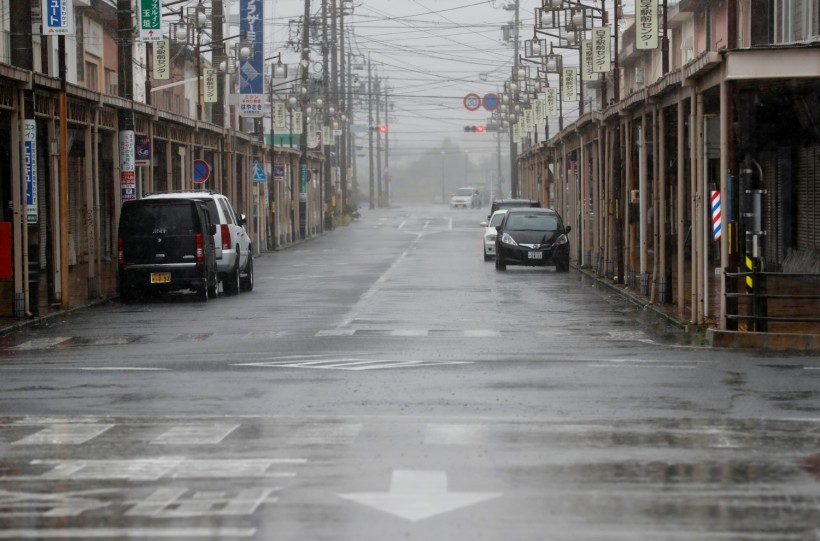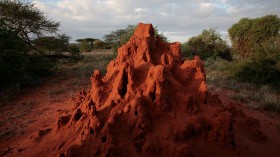
An empty road leading into Shiroko, Suzuka, Japan October 12, 2019, seen in heavy rain ahead of Typhoon Hagibis.
The Japan Meteorological Agency (JMA) warned that Typhoon Hagibis could be as deadly as the Kanogawa Typhoon, which hit Shizuoka and Tokyo in 1958. According to Agence France-Presse, JMA said the typhoon could bring heavy rainfalls and extremely rough seas and winds up to 135 mph to the region. Residents of the affected areas were warned to start evacuating before the storm hits the country.
Weather Network meteorologist Tyler Hamilton added that Hagibis had caught the attention of experts from around the world for its rapid intensity.
Hamilton told Express-News that Super Typhoon Hagibis exceeded Hurricane Dorian's atmospheric pressure worth 910 hectopascals. Japan Times reported that the atmospheric pressure of typhoon Hagibis increased to 945 hectopascals at its center and was packing gusts up to 216 kilometers per hour.
Philip Klotzbach, a hurricane researcher at Colorado State University, tweeted that Typhoon Hagibis has surpassed Wutip as the leading 2019 western North Pacific Accumulated Cyclone Energy generator to date.

While acknowledging that Hagibis could be deadly, JMA's forecast chief Yasushi Kajihara warned residents in the affected areas "to protect your own life and your loved ones." Hagibis, which means "speed" in Filipino, arrives in Japan's Area of Responsibility just a month after Typhoon Faxai hit the Tokyo region.
In a recent report, Faxai left thousands of households and business establishments without electricity lines, 30,000 damaged homes, and at least two people dead. Meanwhile, the people in Chiba prefecture, which was also severely affected by Faxai, have been advised to gather basic necessities such as food and water in preparation for Typhoon Hagibis, according to Reuters. Prime Minister Shinzo Abe ordered the Japanese officials to take possible measures to keep people safe, said Chief Cabinet Secretary Yoshihide Suga.
According to The Japan Times, more than 900 flights were canceled in Japan, and there would be significant disruptions in rail and train operations due to the storm. All Nippon Airways (ANA) suspended all flights coming in and out of Tokyo's Haneda and Narita airports on Saturday. Central Japan Railway Co. likewise canceled nearly all bullet train services between the capital and Osaka. Shinkansen services between Tokyo and Nagoya were also gradually canceled on Saturday. Six morning trains only operated between Shin-Osaka and Nagoya routes. Shin-Osaka and Okayama routes were also canceled in the afternoon.
Tokyo Disneyland and Tokyo DisneySea will be likewise temporarily closed the whole day—from Saturday morning to Sunday noon, says their operator Oriental Land Co. Tokyo Electric Power Company Holdings Inc. announced there would be a brief power outage in Chiba. About 8,800 homes were without electricity in Tokyo, Chiba, and other prefectures in the service area as of 10:30 am, according to reports. Manufacturers such as Honda and Toyota Motor Corporations also suspended their factory operations on Saturday. Thousands of households were advised to evacuate due to flood warnings. Typhoon Hagibis could bring the most torrential rain and winds to the country in 60 years.
Local officials equipped with satellite phones were likewise dispatched across the region to ensure communities can seek assistance during and after the storm.
© 2024 NatureWorldNews.com All rights reserved. Do not reproduce without permission.





